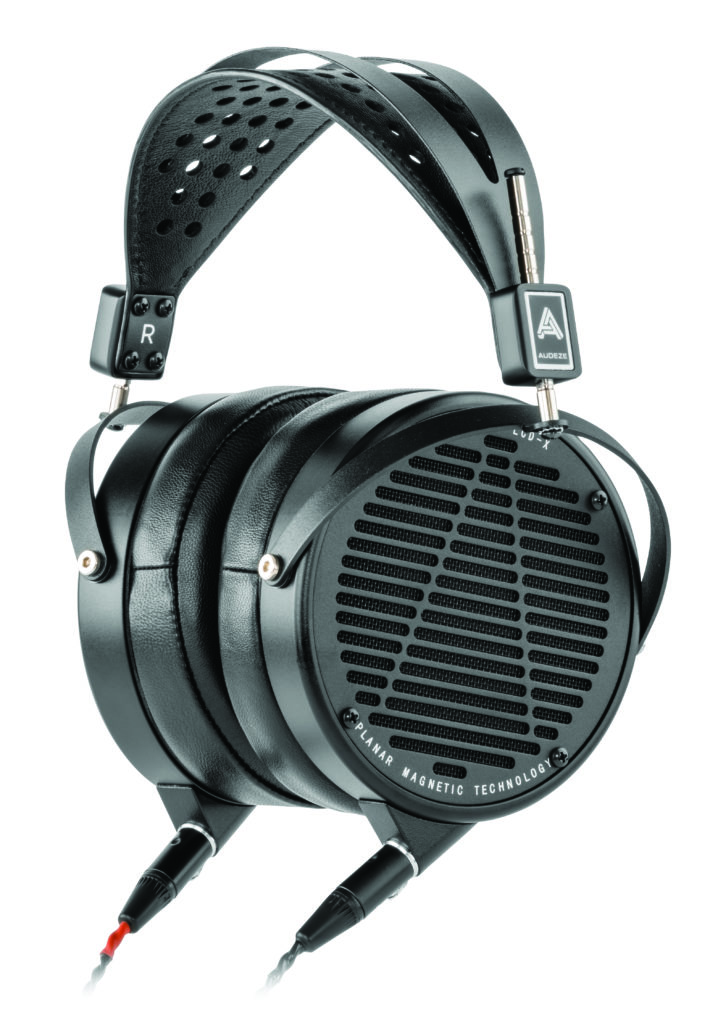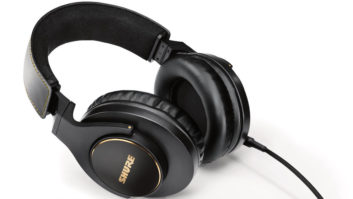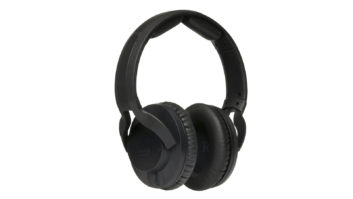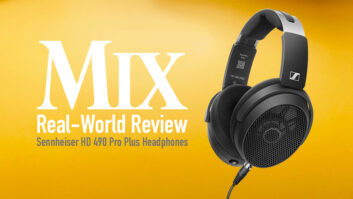
California-based Audeze has reissued the original LCD-X model of headphones as the LCD-X Creator Package. They are specifically aimed at audio professionals and have an open-back, circumaural design that uses planar magnetic drivers.
I received the LCD-X headphones, a certificate of authenticity and warranty, a 1.9-meter stereo cable, and a hard-shell carrying case. I was already familiar with Audeze’s LCD-1 foldable, open-back headphones.
Like loudspeakers, dynamic headphone drivers have a conical-shaped diaphragm made from paper, plastic or metal with a voice-coil attached at its center. When an electrical audio signal passes through the voice-coil, it moves “piston-like” back and forth within a magnetic field. To reproduce bass frequencies, it has to move large volumes of air, requiring both a large surface area and good flexibility. Dynamic diaphragms tend to be stiff and inflexible, resulting in distortion and a lower-frequency limit. Dynamic headphones begin to roll off starting at about 50 Hz.
In contrast a flat planar driver diaphragm, as used in the LCD-X, is made from a polymer film 1.8-micron thick, 100 mm in diameter, with a 4-micron thick aluminum voice-coil printed directly on it. The thin and flat diaphragm’s lighter mass and weight allow it to move more freely and accurately in response to the audio input signal. Planar magnetic drivers reproduce down to 20 Hz easily. In addition, the thinner transducer allows for an overall slimmer design of the ear cups.
OPEN-BACK LCD-X
The new LCD-X has comfortable leather ear pads that seal nicely on your head (synthetic leather is an option). Their overall size, metal construction and powerful N50 neodymium magnets cause these headphones to weigh 1.4 pounds (635 grams). They are a little heavy on my head compared to other headphones such as my Audeze LCD-1s at 250 grams. But they are comfortable. I got used to them quickly, and the extra weight does aid in the way they “mold” to the sides of my head to form a good acoustic seal after only a few minutes.
Being open-back, the feeling of occlusion is minimal; I can still hear sounds around me. I found that good for at home but not outside on busy city streets or in the recording studio with other louder sound sources playing around me. For extended critical listening sessions, I would play back mixes sitting on my studio couch with my feet up.
The LCD-X uses a gold-plated 1/4-inch TRS connector that splits out to a pair of mini-XLR connectors on the end of an elaborately braided cord. I liked the way the phones’ L/R connector jacks project forward from near the bottom of the ear cups instead of straight down as with most headphones.
Putting them on my head L/R-correct is a given! With them off my head and compressing the L/R ear cups together, I could hear the polymer diaphragms flexing—clicking. However, once they are on my head, that stops.
The recommended amplifier power for the LCD-X is from 1 to 4 watts. The LCD-X will work connected to a cell phone, tablet or laptop, but, as I found with my LCD-1s, they will not reproduce the bass accurately. To get the best performance, you’ll need a proper headphone amp like the Benchmark Media HPA 4 (reviewed recently in Mix). I used my musicians’ cue system that uses a Simon Systems CB-4 Cue Box powered by a 100-watts/channel Hafler stereo power amp, and that proved excellent.
LISTENING ON AUDEZE
I have been looking for an alternate way to check my mix work beyond my main monitors and Yamaha NS-10Ms. Headphone monitoring offers an “alternate sonic reality”—you’re listening more purely without the effect of the acoustics of the room and/or the proclivities of your particular monitoring loudspeakers.
I started by A/B listening on my mains at the same SPL as in the ‘phones. My small control room is acoustically treated with the listening position equidistant from the left and right monitors at 1.1 meters.
On both mastered music and in-progress mixes, the LCD-X sounded marvelous. I heard the bass similar in character and level as on my monitors. I heard deep into the stereo image and space I had created, and I heard reverb tails and subtle decays better than on my monitors.
Mixing on headphones (for me) usually means I’ll use lesser reverb and delay levels compared to mixing on loudspeakers. I tend to play down effect levels because I hear them so well with drivers right on my ears. In addition, the mix has no “foreground”—everything ends up mixed as “background”—a “shallow depth of field” to use a photography term.
With music mixed only on headphones and played back on speakers, I find vocals are not just too quiet but they are not presented as strong foreground elements. That is why I like mixing on speakers and checking on headphones.
It was the same using the LCD-Xs, though the differences were more apparent to me—a very good thing! I did hear a pleasant (not harsh) increase in brightness compared to my monitors. During all these tests, I noticed certain cymbal crashes in the headphones were not as bright and didn’t sit in the mix as when listening on the monitors.
FINAL ARBITER
I found the LCD-X headphones to be the perfect “final arbiter.” They were useful well after I had finished a mix to my satisfaction on monitor speakers, or when I would later hear the mastered version. I would take a day off, then come back and play it on the LCD-X headphones. If there was something bothering me in the mix or mastering, then I investigated. But usually it was good and the LCD-X headphones were all I ever needed
Product Summary
Company: Audeze Headphones
Product: LCD-X Creator Package
Website: audeze.com/products/lcd-x
Price: $1,199 MSRP
Pros: Awesome-sounding
Cons: A little heavy on the head







